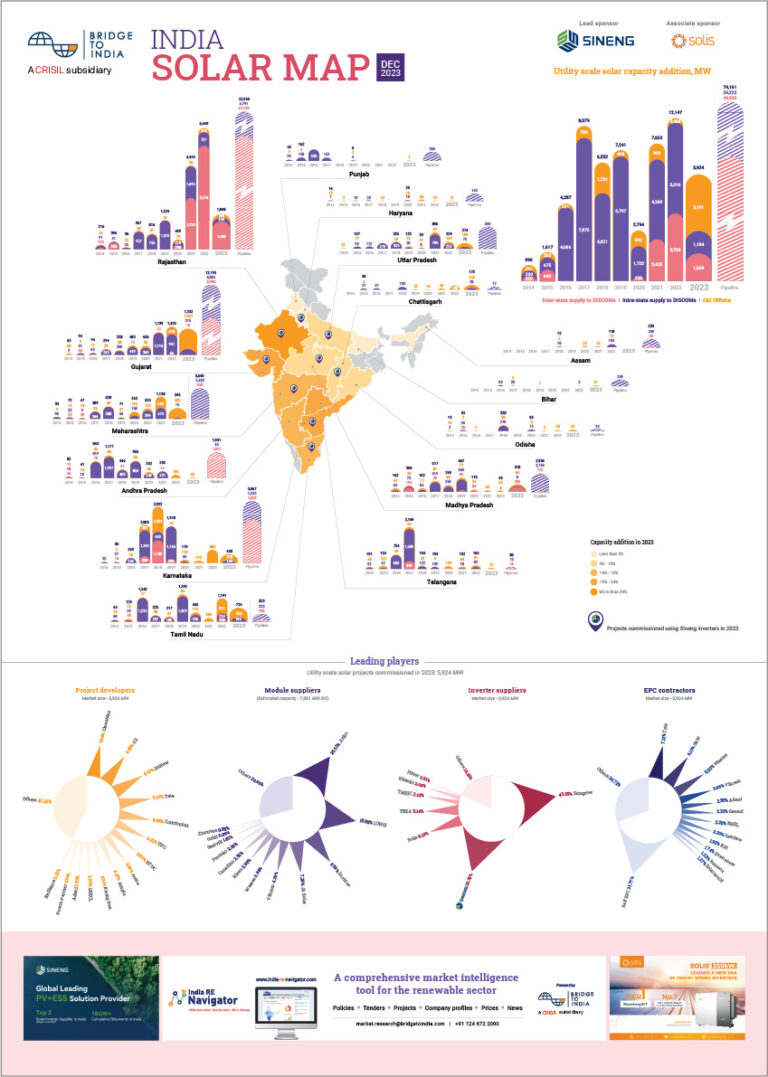Contrary to most expectations, the BJP led political alliance has won the general election with a thumping majority, even bigger than in 2014. Prime Minister Modi is expected to take oath for the next five-year term on 30 May 2019. It seems that the cabinet of ministers could also be sworn simultaneously. It will be interesting to watch who assumes charge of MNRE particularly as the Prime Minister is expected to include many new names in the cabinet.
We have always maintained that India’s renewable energy growth story is fundamentally strong and independent of which way the political winds are blowing. Return of the Modi government with a decisive mandate is nonetheless a positive and reassuring news for the sector. Given the continuity of administration, we do not expect change of any notable significance in the direction.
The new government should lay emphasis on two fronts – one, efficient execution to pacify investor concerns and address the growing sense of crisis; and two, reforms to ensure strong foundations for long-term growth of the sector. We suggest a time-based prioritisation approach based on criticality of challenges that lie ahead.
Short-term (first year)
- Find a permanent solution for DISCOM offtake risk;
- Provide binding clarity on GST for different business models and contracting structures;
- Identify suitable parcels of land and make requisite information – details of ownership, usage restrictions, transmission access and cost – available to the industry;
- Provide a clear long-term policy roadmap for rooftop solar and open access;
- Diversify focus away from large solar parks to distributed generation including development of rural and agricultural RE schemes;
- Develop a robust and comprehensive domestic manufacturing policy to provide long-term visibility to investors;
Medium-term (1-3 years)
- Undertake quality audits, formulate detailed India specific technical quality and product standards for different technologies and applications;
- Push Electricity Act amendments (separation of content and carriage);
- Phase out all direct financial incentives including capital subsidies, free transmission and cheap debt except for residential, agricultural and rural applications;
- Develop a detailed storage plan – technologies, applications, pricing models;
- Formulate a 2030 and 2050 energy vision for the country;
Long-term (> 3 years)
- Move to market-oriented power pricing, encourage shorter PPAs;
- Build flexibility in the power system by making coal plants more flexible, widening and deepening the ancillary services market and introducing demand side management measures;
- Invest in local R&D capability;
It may seem like a long wish list but as almost every other country is discovering, transition to a clean energy world is not easy. A multi-dimensional policy package is essential for attracting investments and restoring market confidence. Most importantly, there should be a strong thrust on improved execution and enforcement. All too often, many good policy initiatives have been undone by execution pitfalls (UDAY, RPO, open access, net metering, to name just a few) and we need to learn from past failures.












